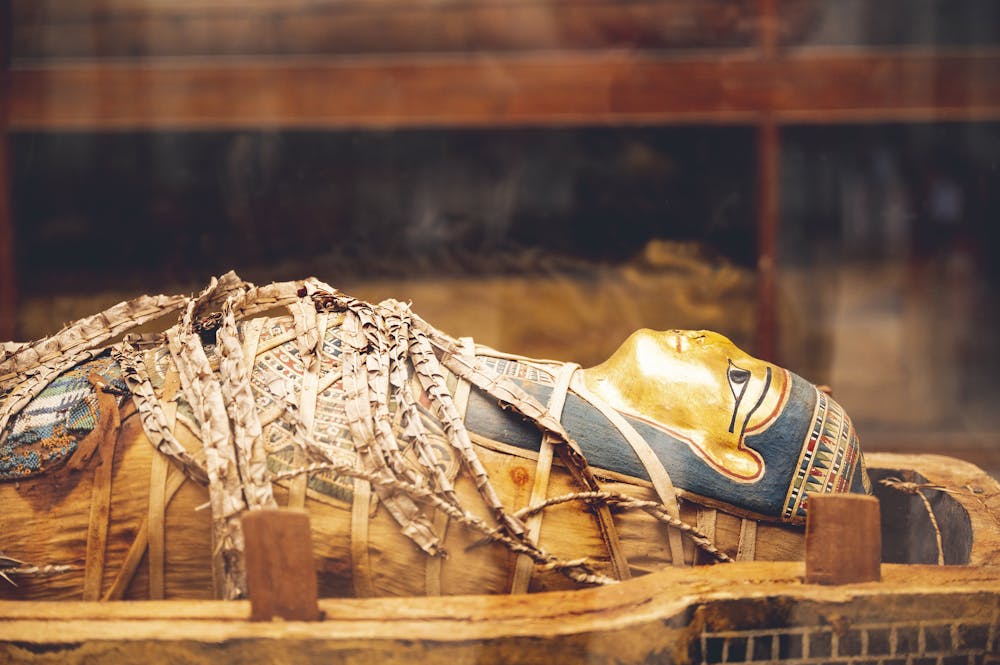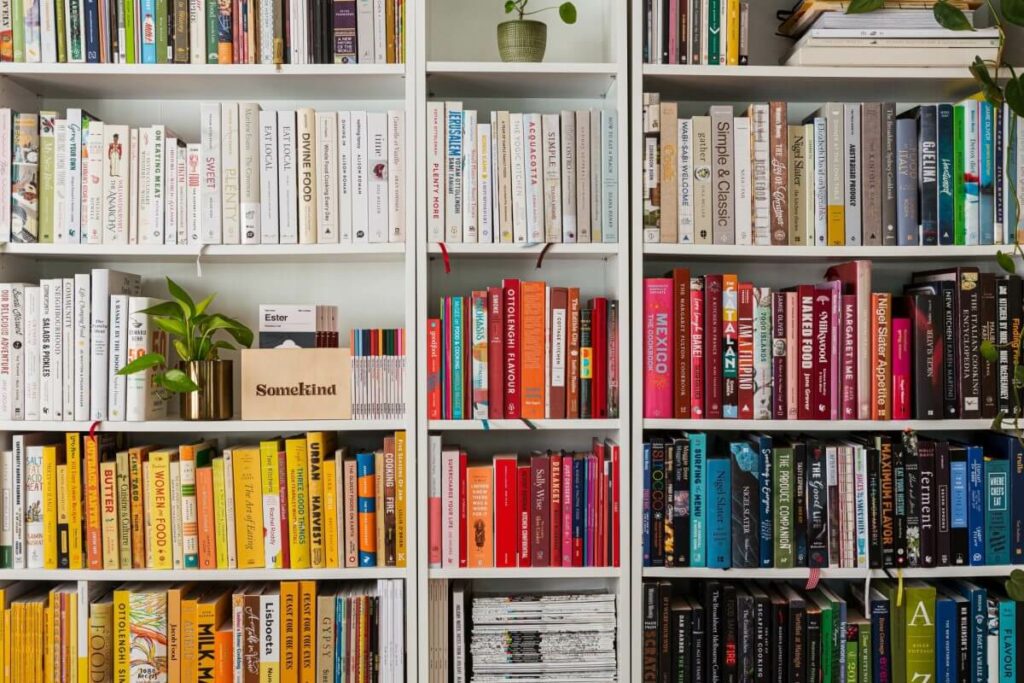Discover Pandipedia
Pandipedia is the world's first encyclopaedia of machine generated content approved by humans. You can contribute by simply searching and clicking/tapping on "Add To Pandipedia" in the answer you like. Learn More
Expand the world's knowledge as you search and help others. Go you!
Yes, the quality-adjusted prices have gone down. Some adjustments aimed to allow Google to share in the value generated, indicating that as the value increased, quality-adjusted prices went down. Additionally, a proposal was made to reduce the revenue share percentage to facilitate funding for other objectives[3][2].
Let's look at alternatives:
- Modify the query.
- Start a new thread.
- Remove sources (if manually added).
- Request a manual search from our human research team.
Current challenges in international relations include escalating geopolitical tensions, particularly due to Russia's aggressive stance, which has prompted a reevaluation of collective security frameworks established post-1945. As the war in Ukraine continues, the implications for international governance and security structures are profound, leading to heightened rhetoric regarding nuclear capabilities and deterrence strategies[1][4].
Additionally, the U.S.-China relationship is marked by intensifying confrontations, compounded by issues such as trade disputes, technological competition, and climate change. These factors contribute to rising uncertainties within global alliances and the shifting nature of diplomacy, which must adapt to an increasingly multipolar world[2][3].
Let's look at alternatives:
- Modify the query.
- Start a new thread.
- Remove sources (if manually added).
- Request a manual search from our human research team.
Get more accurate answers with Super Search, upload files, personalised discovery feed, save searches and contribute to the PandiPedia.

Routines significantly enhance productivity by automating daily tasks, allowing individuals to conserve mental energy for more complex challenges. When routines are intact, tasks become habitual, enabling focused attention on higher-level responsibilities, which ultimately boosts overall productivity[4][5]. Moreover, regular routines support cognitive function, freeing individuals to be more creative and efficient throughout their workday[1][2].
Disruptions to established routines can hinder productivity, leading to less engagement and increased mental exhaustion[4]. Maintaining consistent daily habits establishes a predictable structure that helps manage time effectively, thereby increasing the likelihood of achieving daily goals[3][5].
Let's look at alternatives:
- Modify the query.
- Start a new thread.
- Remove sources (if manually added).
- Request a manual search from our human research team.
:max_bytes(150000):strip_icc()/45259671-97112006e572444a996dbbacfd4b8bed.jpg)
Quick meal prep tips for weekdays include starting small by planning just a few meals to build confidence and make the habit sustainable[2]. Consider the balance of food groups to ensure a nutritious meal plan, incorporating whole foods and keeping a well-stocked pantry to streamline the process[2][3].
Invest in quality storage containers for easy meal organization and portion control, and pre-portion meals into individual containers to save time[2][4]. Batch cooking specific ingredients allows for versatile meals throughout the week, while using the freezer for prepared dishes can extend their freshness[2][6]. Remember to keep your pantry organized to reduce stress during meal prep[4].
Let's look at alternatives:
- Modify the query.
- Start a new thread.
- Remove sources (if manually added).
- Request a manual search from our human research team.
Let's look at alternatives:
- Modify the query.
- Start a new thread.
- Remove sources (if manually added).
- Request a manual search from our human research team.
The mummification of Cleopatra VII, the last Pharaoh of Egypt, has been a subject of considerable historical intrigue. Based on a detailed analysis of various sources, this report examines the available evidence to determine whether Cleopatra was indeed mummified.
Historical Accounts and Evidence
Mummification Practices and Cleopatra's Burial
According to historical texts, notably those of Plutarch and other ancient writers, after Cleopatra and Mark Antony's defeat by Octavian, they were allowed to be buried together. These sources suggest that Cleopatra's burial followed traditional Egyptian royal practices, which typically included mummification[4][8]. This is supported by the narrative that posthumous honors were afforded to her, which would have included mummification and a ceremonious burial[8].
Archaeological Discoveries

Archaeological explorations led by Kathleen Martinez at the Taposiris Magna temple have uncovered significant artifacts, including mummies, coins, and inscriptions related to Cleopatra, suggesting her association with the site. However, definitive evidence linking these mummies to Cleopatra herself remains elusive[1][2][3][5][9]. Martinez's excavations have found clues pointing towards Cleopatra's potential tomb but have yet to definitively prove her mummified remains reside there[3][5].
Contradictory Views

Zahi Hawass, a prominent Egyptologist, has argued against the likelihood of Cleopatra being buried at Taposiris Magna, suggesting instead that her tomb was submerged underwater near Alexandria. This standpoint complicates the determination of whether her remains were mummified since the underwater burial could imply different preservation conditions[4][7].
Mummification Process

Traditional Egyptian mummification involved the drying of the body using natron salts, removal of internal organs, and wrapping in linen[3]. Given Cleopatra's status, it is likely that she would have undergone such a process. Historical sources generally agree that Cleopatra and Antony were interred in a mausoleum with the anticipated honors, but direct descriptions of her mummification are absent.
Contemporary Findings
Reports of mummified remains in the vicinity of Cleopatra's potential burial site provide indirect evidence. For instance, multiple mummified bodies found in the Taposiris Magna temple might imply burial practices consistent with Cleopatra's era, heightening the plausibility that she was similarly entombed and preserved[3][5][10].
Plutarch's Testimony

Plutarch, writing decades after Cleopatra's death, provides detailed accounts of her final days and suicide, emphasizing her burial alongside Antony in a mausoleum[4][8][10]. Despite the ceremonial context described, Plutarch does not explicitly confirm her mummification within his narrative, leaving some ambiguity.
Conclusion
There is substantial circumstantial evidence to suggest Cleopatra was mummified, drawn from traditional Egyptian royal practices and funerary customs described in historical texts. Despite the absence of direct, unambiguous proof, such as a discovered mummy definitively identified as Cleopatra, the alignment of archaeological findings and historical writings strongly supports the likelihood of her mummification.
The search for Cleopatra's tomb continues, with potential discoveries at Taposiris Magna and submerged sectors of ancient Alexandria providing hope for future confirmation[1][2][4][7][10]. Until then, the consensus based on existing evidence leans towards Cleopatra having been mummified in line with her royal status and the customs of her time.
Let's look at alternatives:
- Modify the query.
- Start a new thread.
- Remove sources (if manually added).
- Request a manual search from our human research team.
Get more accurate answers with Super Search, upload files, personalised discovery feed, save searches and contribute to the PandiPedia.

Here are some fun facts about JavaScript:
JavaScript was created by Brendan Eich in 1995 during a brief 10-day development period and was initially named 'Mocha,' later becoming 'LiveScript,' and finally 'JavaScript' to capitalize on the popularity of Java[1][2][5]. Despite the name, JavaScript is not directly related to Java and is designed as a lightweight, prototype-based language for adding interactivity to web pages[2][5]. JavaScript treats functions as first-class citizens, allowing them to be assigned to variables, passed as arguments, and returned from other functions, enhancing modularity and code reusability[2].
JavaScript is primarily known for its role in client-side web development, executing in the browser to enable dynamic interactions. However, with Node.js, it has expanded to server-side development, enabling full-stack applications using a single language[5]. The language is dynamically typed, meaning variables can hold values of any type, and it supports both functional and object-oriented programming paradigms[5].
JavaScript uses asynchronous programming techniques, including callbacks, promises, and async/await, allowing it to handle time-consuming operations without blocking other code execution[2][5]. Additionally, an interesting quirk of JavaScript is that NaN (Not a Number) is considered a unique value that is not equal to itself[3]. The language has a rich ecosystem, consisting of numerous libraries and frameworks like React, Angular, and Vue.js, which enhance development productivity[5].
Overall, JavaScript is a foundational component of the web, with over 95% of websites utilizing it today[1].
Let's look at alternatives:
- Modify the query.
- Start a new thread.
- Remove sources (if manually added).
- Request a manual search from our human research team.

Hygge (pronounced 'hoo-gah') is a Danish concept that encapsulates a feeling of coziness, comfort, and contentment. It represents a lifestyle that encourages individuals to savor the simple pleasures in life and create a sense of warmth in their surroundings, making it particularly appealing in today's fast-paced world. This report will explore how embracing hygge can significantly enhance your lifestyle by promoting emotional well-being, fostering connections, and creating a nurturing environment.
The Essence of Hygge

At its core, hygge is about creating an atmosphere that promotes relaxation and safety. It revolves around the cultivation of joy from everyday experiences, often shared with loved ones. The concept of hygge is not merely about physical comfort; it also emphasizes emotional well-being. This includes feeling secure and at peace while nurturing connections with friends and family, whether through intimate gatherings or simple shared moments like enjoying a cozy meal together[2][8].
Hygge can be practiced in various forms, whether through a warm cup of tea on a rainy day, snuggling under soft blankets, or engaging in conversations with loved ones by candlelight[4][10]. It encourages a pause from the daily hustle, inviting individuals to embrace mindfulness and enjoy the present moment. This emphasis on togetherness is fundamental; the Danish believe that social relationships play a pivotal role in happiness and well-being, often fostering a sense of community and belonging[10][11].
Creating a Hygge Atmosphere
The physical environment plays a crucial role in achieving hygge. A welcoming and comforting space is essential, characterized by soft lighting, cozy textiles, and natural elements. Key aspects include:
Lighting: Soft, ambient lighting is vital for creating a hygge atmosphere. This can be achieved through candles, fairy lights, and warm-toned lamps, fostering a tranquil mood that invites unwinding and connection[10][11].
Comfort Items: Incorporating plush pillows, throw blankets, and comfortable seating encourages relaxation and a sense of security. Additionally, wearing loose, cozy clothing, such as thick socks and soft sweaters, enhances the feeling of comfort[9][10].
Natural Elements: Integrating plants, wooden décor, and other natural materials can bring a calming aesthetic to your space, contributing to a sense of tranquility[5][7].
Personal Touches: Surrounding yourself with items that hold personal significance or evoke fond memories can enhance the cozy ambiance of your environment, making it uniquely yours[7][9].
Benefits of Embracing Hygge

Incorporating hygge into daily life can yield numerous benefits, particularly in enhancing one's emotional state and mental health:
Stress Reduction: By fostering a cozy atmosphere that promotes relaxation, individuals can significantly reduce stress levels and create a sanctuary from external chaos[11].
Improved Relationships: Hygge emphasizes the importance of social connections, allowing for deeper relationships through shared experiences and collective enjoyment of life’s simple pleasures. Regular gatherings with friends and family, whether for meals or activities, play a key role in fostering these connections[2][4][11].
Mindfulness and Presence: Hygge encourages individuals to be mindful and fully present in their experiences. This practice involves unplugging from digital distractions and engaging with the world around you, whether through a quiet evening at home or a leisurely walk in nature[8][10].
Emotional Well-Being: The combination of a comforting environment and meaningful relationships contributes to enhanced emotional health. Studies indicate that positive social interactions can improve mood and reduce feelings of loneliness[4][11].
Practicing Hygge Daily

Integrating hygge into your everyday life can be simple and rewarding. Here are practical ways to do so:
Establish a Cozy Routine: Dedicate moments for self-care, such as enjoying a warm drink by the fireplace or engaging in a relaxing activity like reading or knitting[4].
Cook Comfort Food: Preparing a hearty meal or baking can be a delightful way to enjoy comfort food while creating a welcoming atmosphere. It amplifies the sensory experience, filling your home with delightful aromas and warmth[10][11].
Engage in Mindful Activities: Spend time savoring activities that bring happiness, such as crafting, journaling, or going for a nature walk. These moments allow for reflection and appreciation of the present[5][10].
Host Gatherings: Invite friends and family over for casual dinners, game nights, or simply to enjoy each other’s company. The essence of hygge thrives on togetherness, creating memorable experiences and fostering strong bonds[9][10].
Conclusion

Embracing hygge can significantly enhance one’s lifestyle by promoting a sense of comfort, fostering relationships, and creating a soothing environment. It teaches individuals to appreciate the little things in life and slow down in a fast-paced world. By integrating simple hygge practices into daily routines, individuals can cultivate happiness, contentment, and well-being, reflecting the Danish philosophy that has resonated globally. Through this gentle embrace of coziness and connection, one can navigate life’s complexities with greater serenity and joy.
Let's look at alternatives:
- Modify the query.
- Start a new thread.
- Remove sources (if manually added).
- Request a manual search from our human research team.

Simple DIY home repairs include fixing a leaky faucet, which often involves replacing a worn washer after shutting off the water supply[4]. Cleaning clogged drains, such as those in sinks or showers, can be done by using a drain snake or hot water to dislodge blockages[4].
Other manageable tasks include patching small holes in drywall with spackling paste, painting walls, and replacing light fixtures by connecting wires safely after turning off the power[4][5]. Additionally, homeowners can apply weatherstripping around doors and windows to reduce drafts and improve energy efficiency[1]. These repairs can help maintain your home without professional assistance.
Let's look at alternatives:
- Modify the query.
- Start a new thread.
- Remove sources (if manually added).
- Request a manual search from our human research team.

AI agents improve over time through continuous learning [7]. By regularly updating their data, providing feedback, and giving new instructions, you ensure agents have the information they need to work effectively.
Otter[1]
Learning agents are the most advanced type of AI agent [7]. They improve over time by learning from new data and experiences.
Otter[1]

AI agents need constant oversight to make sure they meet your expectations [7]. Track metrics like accuracy, efficiency, and user satisfaction.
Otter[1]
The model must be very proficient at locating hard-to-find pieces of information, but it’s not guaranteed that this generalizes to all tasks that require browsing [11].
2504.12516[2]
AI agents are revolutionizing work by enhancing productivity â and Otter is leading the charge [7]. With these innovative AI agents, youâll save time and stay ahead of the competition.
Otter[1]
Let's look at alternatives:
- Modify the query.
- Start a new thread.
- Remove sources (if manually added).
- Request a manual search from our human research team.